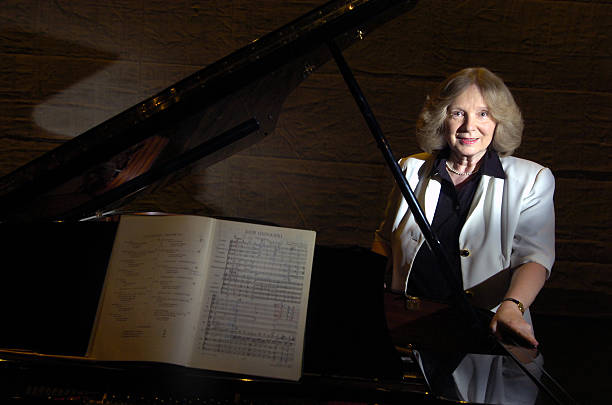7 ideas for warming up the choir
Years ago I had a very experienced choral singer come up to me in Cantala and tell me that I spend a lot of time on warming up and inquired "isn't there an urgency to get to rehearsing the repertoire?".
"Nope, no urgency" I replied.
When I was in graduate school, my mentor Agnes Grossman, taught me that you must work on warming up the choir thoroughly, otherwise all your program repertoire to follow in rehearsal will be out of tune. For 20 minutes she drilled us on exercises with quick repeating syllables, dynamics, and many different combinations. It was not a time to doze off and go into automatic pilot. This was the time we worked on our technique-vowel colours, tuning, listening skills, enunciating, crescendo and decrescendo.... It was intense- those warm ups were difficult! It was always a relief when it ended. But as we moved on to repertoire, the ideas were already in place. We were already listening, focused, tuning to each other and confident of our ability to do what she wanted because she had already clearly established it in her warm up.
Agnes Grossman. An outstanding musician, teacher and mentor to myself and many.
I have spoken on the importance of warming up in the past. Warming up is an important opportunity to also bring everyone together by settle breathing, calming minds, sharpening focus and opening ears.
7 tips for warming up a choir
1. Most are familiar with the phrase “fake it ‘til you make it”. During a vocal warm up it might be necessary to fake energy and sparkle in order to attain it. No harm in that.
2. Get the singers to listen. I ask them to sing natural, harmonic, and melodic scales descending and ascending, in canon, and in different rhythms they are not used to. Anything that is at once familiar but now new again due to a simple change does the trick. It makes them pay attention, listen and start to concentrate. A wonderful exercise I learned from Suba Sankaran is by taking the major scale, singing it descending, repeating the tonic note twice at the bottom of the scale and then ascending to the tonic again. Simple, familiar, but different. It is also gorgeous in multiple, canonical parts.
3. I include a vocal exercise that is just about openness, ease, range developing and fullness. I want the singers to have breath support by feeling wide through their rib cage. I want them to naturally want to crescendo and decrescendo. Sometimes I reverse this natural dynamic tendency and ask them to decrescendo to the top of the scale and then crescendo to the bottom.
4. For developing unity of vowels I work on all five vowels on a single pitch in a standard traditional exercise. I like to explain where the tip of the tongue needs to be, and for them to notice that the back of the tongue forms different shapes to change the resonances we recognise as “vowel colours”. Read more on this in the blog the ABCs of Singing.
5. Once you get singers breathing, the increased oxygen levels help to re-energise their minds. But I find the most important part of a choir warm up is to get them to create beautiful music. If you can make a beautiful magical warm-up moment (ie. simple canons that can be based on major scales), you will have captured their attention. I also notice by this time they will have forgotten their work day and are ready to rehearse.

